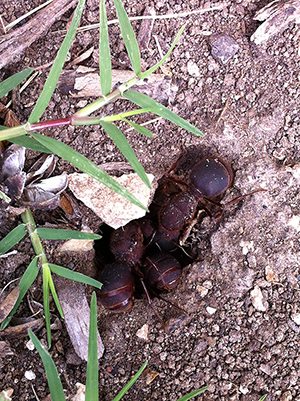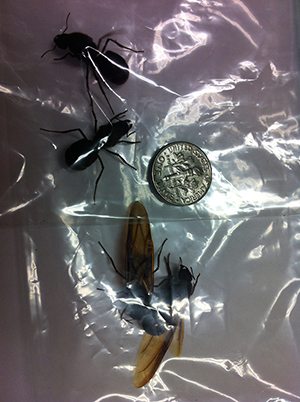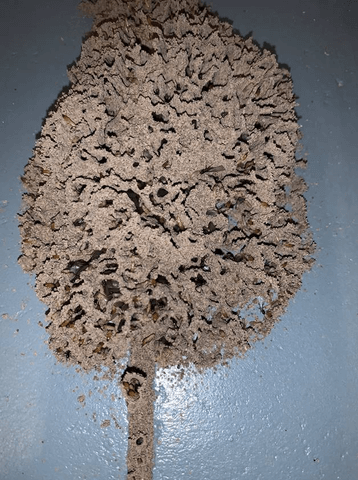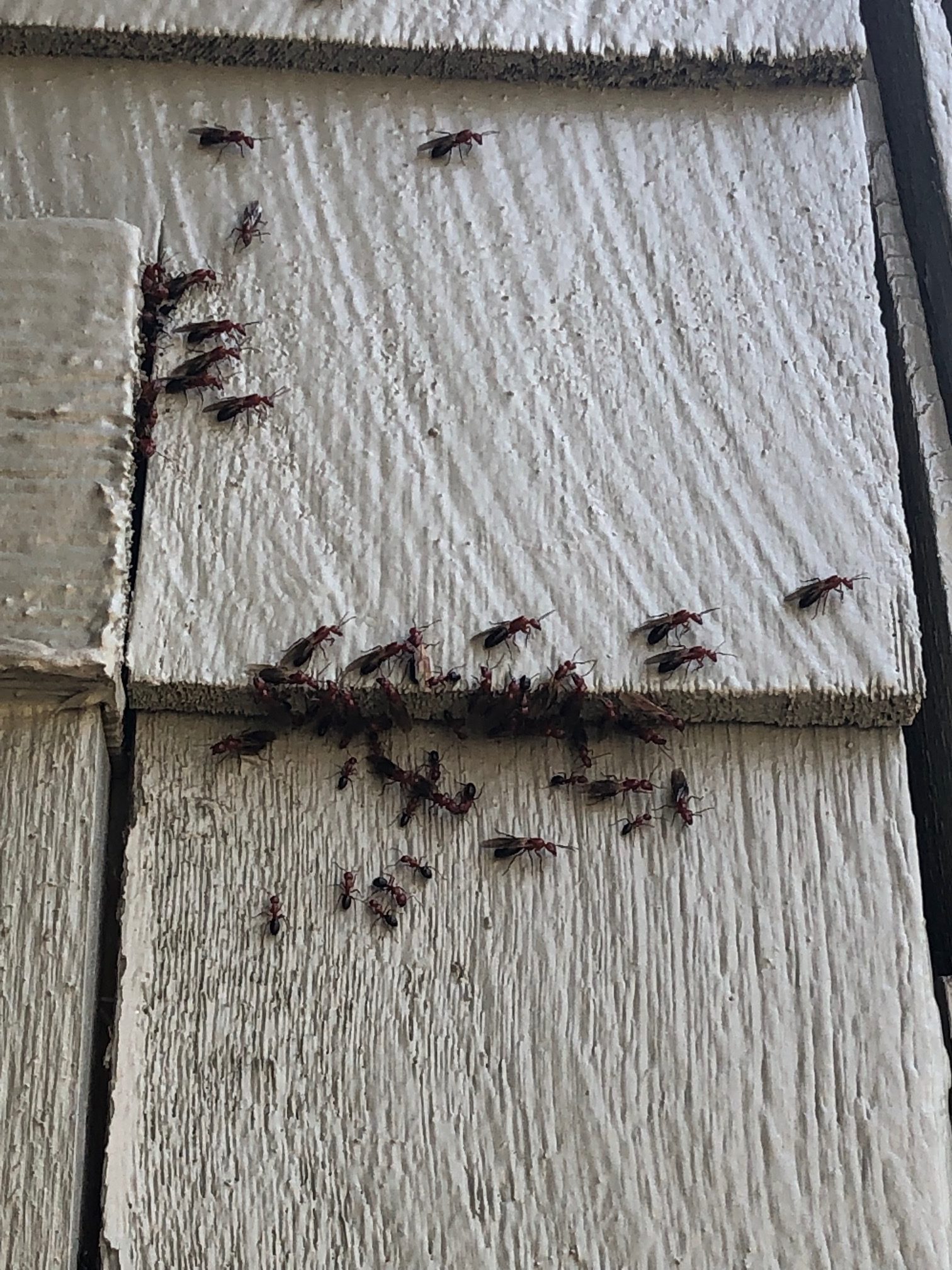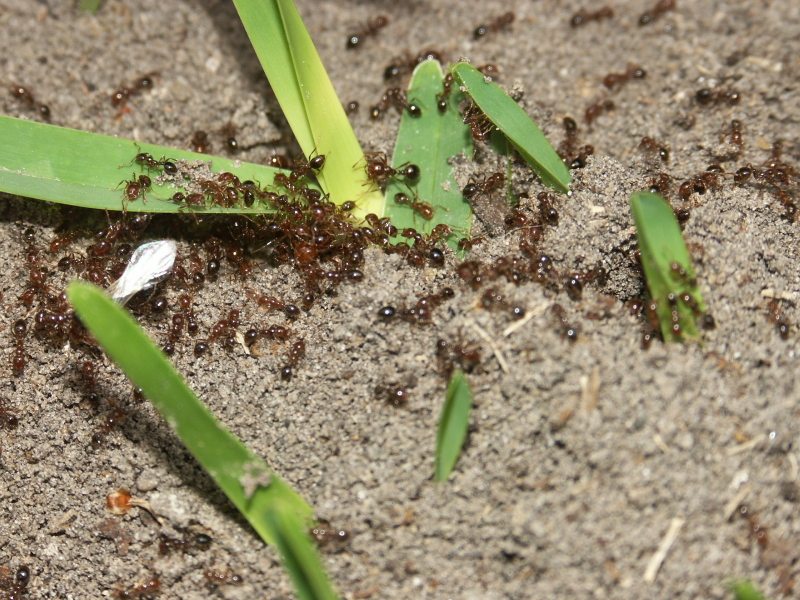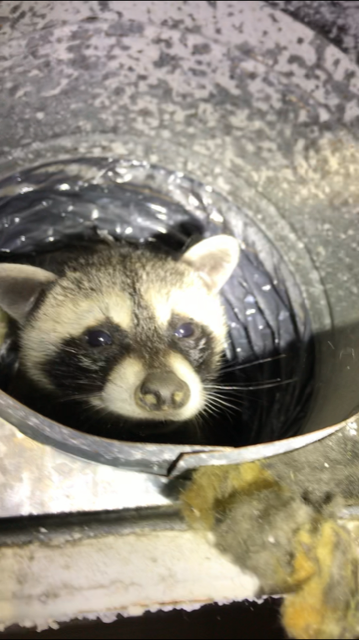Ants
![]() Ants are amazing insects. Their sole purpose is to support the colony as a whole. There is no “I” in ant.
Ants are amazing insects. Their sole purpose is to support the colony as a whole. There is no “I” in ant.
An ant colony is an underground lair where ants live. Colonies consist of a series of underground chambers, connectd to eachother and surface of the earth by small tunnels. Much like a house, they have rooms for nurseries, food storage and maiting. The colony is built and maintained by legions of worker ants, who carry tiny bits of dirt in their mandibles and deposit them near the exit of the colony, forming an ant-hill.
Ant colonies are eusocial, living in a cooperative group in which usually one female and several males are reproductively active and the nonbreeding individuals care for the young or protect and provide for the group. Eggs are laid by one or sometimes more queens. Queens are different in structure, they are the largest ones among all ants, especially their abdomen and thorax which are larger than most ants’. Their task is simply to lay eggs and produce more offspring. Many types of ants can produce as many as 75 – 100 eggs per day. Periodically, swarms of new winged queens and males (alates) are produced in most species, which leave to mate. The males die shortly thereafter, while the surviving queens either found new colonies or occasionally return to their old one. The surviving queens can live up to around 21 years.
The body structure of the ant consists of 3 segments. The head which contains the head, palpus, antennae, brain, its proboscis, pharynx (the start of the digestive system) and mandibles. The antennae are well developed and are used to taste and smell. The mandibles are used to tear and carry food etc.
The thorax is the chest area on the ant, it is divided into three segments; on each segment is a pair of legs and contains the muscles that make the legs move.
The abdomen is the segmented tail area of an ant. It contains the heart, reproductive organs and most of the digestive system (foregut, hindgut and rectum. It is protected by an exoskelton.
Carpenter Ants
Carpenter ants are a nuisance by their presence when found in parts of the home such as the kitchen, bathroom, living room and other quarters. When 20 or more large winged and/or wingless ants are found indoors, in the daytime near one location, it is possible that the colony is well established in the home and the nest may have been extended into sound wood, sometimes causing structural damage. They do not eat wood, but often remove quantities of it to expand their nest size. However, if only one to two large wingless ants are erratically crawling, they may simply be foraging for food with the nest located outside. Outdoors, they are frequently seen running over plants and tree trunks or living in moist, partly rotten wood stumps.
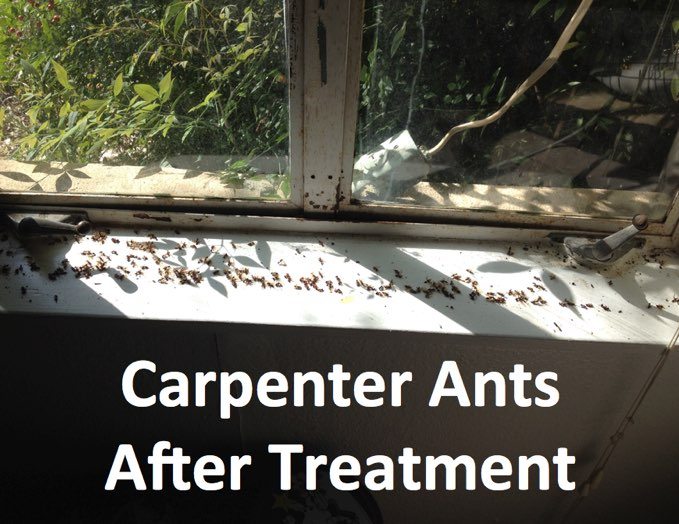
Rover Ants
Rover Ants are quickly becoming a major pain in Central Texas. While probably not the best decscription they look like small bits of pepper running around on my kitchen counter. These tiny South American ants are tiny to small, dark brown to pale blond, soft bodied, and can be seen excitedly running up and down vertical object in yards, such as blades of grass, chairs and fence posts. Female winged alates are three times larger than the workers, males are small enought to fit thru mosquito screening. The feed on the honeydew produced by sap sucking insects on the roots of plants. The Rover ant has only one queen and can produce many colonies in one area. They are very difficult to control.
Acrobat Ants
Acrobat Ants are native to the United States and are identified by the workers holding their tail up above their thorax, like acrobats. The workers range in size from 1/10″ to 1/8″ within different species and vary in color from light brown to dark brownish black. They have a distinct heart-shaped abdomen when viewed from above. The presence of acrobat ant colonies inside homes is normally associated with decayed, moisture-saturated wood from water exposure, leaks or condensation. They do not colonize sound wood like but prefer water damaged wood or wood already damaged by other insects such as carpenter ants or termites. They are often found foraging in moderatly moving tight trails.
Acrobat ants feed on a variety of foods including both sweets and proteins. Workers feed on living and dead insects and on honeydew. Inside structures these ants will feed on household foods, especially sweets. They access structures by trailing along wires, cables, cracks around windows and doors and along the ground.
Crazy Ants
Crazy Ants originated from the tropics and are common in Puerto Rico, Florida and other Gulf coast states. Workers from the colonies are reddish dark brown to black and are all about 1/8″ in length. Their legs are noticeably longer as are their antennae than other ants their size. They generally have loose, unorganized trails and when disturbed run erratically with no apparent direction.
Colonies of crazy ants are relatively small with multiple queens and a few thousand workers. Nests ca be found in both wet and dry soil or under objects onthe groud such as potted plants, landscaping timbers, firewood, and next to foundations in mulch and thick vegetation. They also nest above ground in such areas as clogged gutters and under glat roofs. Nests may exist in wall voids, under carpeting and even under and between undisturbed items stored on floors.
While winged ants are produced in colonies it’s not clear if new colonies are formed from mating flights or by budding, where queens and workers leave a parent nest to begin a new one. They feed on natural food including living and dead insects, honeydew and household food sources that are either greasy and/or sweet.
Leafcutter Ants
